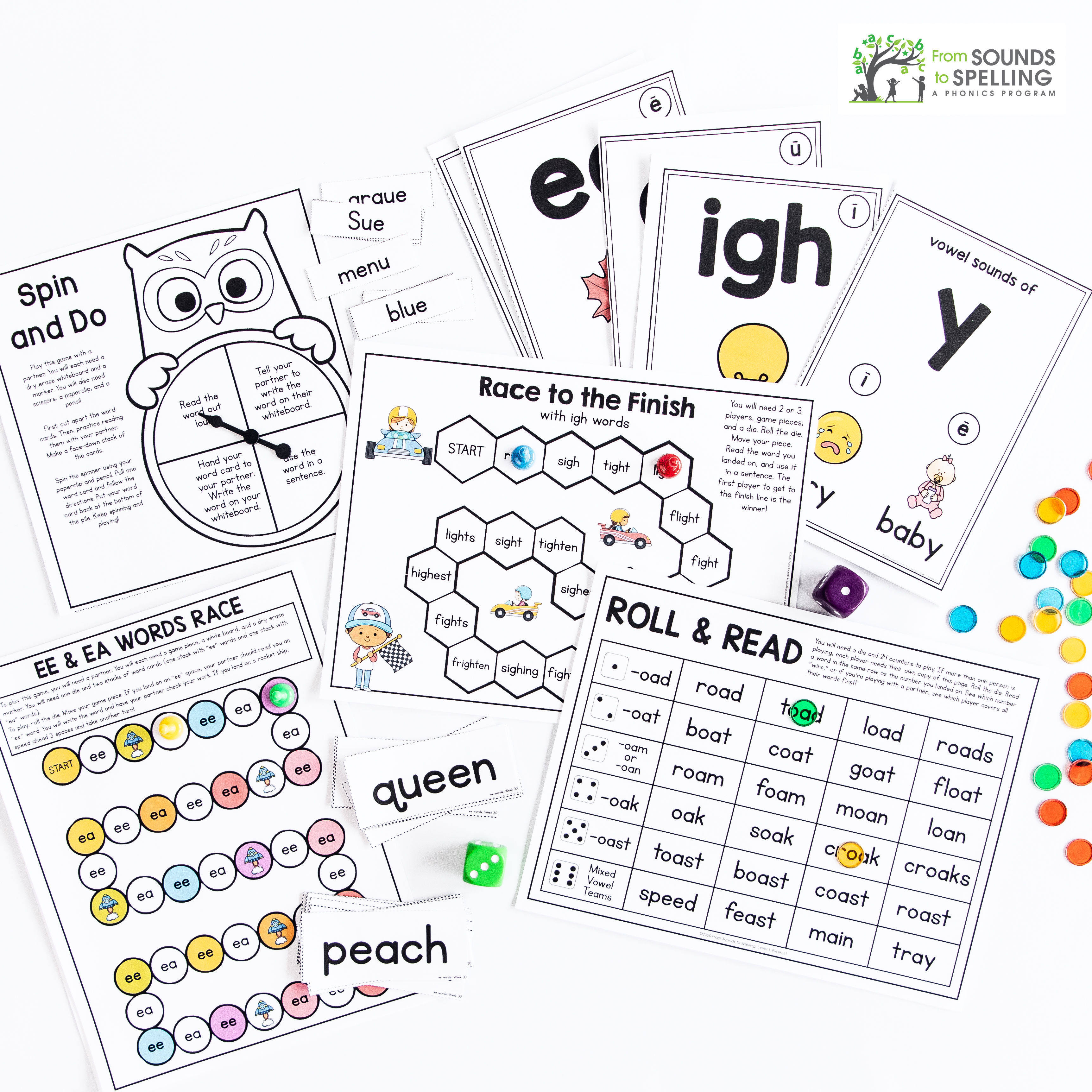
Phonics Instruction: What It Is and Why It’s Important
Phonics instruction (which is sometimes also called word study or word work in schools) is an important component of literacy instruction. In recent years, phonics instruction has gotten more attention as schools work to implement curriculum based on the science of reading.
But phonics is also a complex thing to teach!
If you’re teaching phonics to a student, it’s important to understand the “big picture,” as well as how children’s current stages of development fit into that big picture. In this article, we'll discuss what phonics instruction looks like in Kindergarten, 1st and 2nd grade, and 3rd grade and up.
What is phonics?
Phonics instruction involves teaching the relationships between letters and sounds. A phonics lesson might teach students, for example, the sound for the letter Mm or that vowel team “ea” can make a short or long e sound.
Why is phonics instruction important?
The purpose of phonics instruction is to get children reading and spelling words.
Eventually, they won’t even be thinking much about letters and sounds as they read and write - just like you aren’t thinking about letters or sound as you read this article. However, that’s only because your brain’s process of breaking words into sounds has become extremely quick.
That only happens with time and practice. Phonics instruction helps speed up this process!
Moreover, the majority of students won’t become successful readers without phonics instruction.
How should we teach phonics?
Research suggests that there is no single best method or approach to teaching phonics. However, no matter what phonics approach or phonics program a teacher uses, research indicates that instruction should be systematic and explicit.
- Systematic means that instruction progresses through a specific scope and sequence. For example, students learn short vowels before progressing to long vowels. Systematic also means that instruction goes from easy to complex and includes built-in review and repetition (Blevins, 2017).
- Explicit means that students are directly taught about letters, words, and spelling patterns. Teachers use clear language so students gain strategies for reading and writing words.
What does phonics instruction look like in Kindergarten?
Phonics instruction in kindergarten begins with teaching letters and sounds. Children will also begin to read vowel-consonant (VC) words like “up” and “at,” as well as CVC words like “big” and “sun.” Many Kindergarten phonics programs also include instruction on digraphs (i.e. “sh” and “ch”) and blends (i.e. “fl” as in “flag” or “tr” as in “truck”). You can download a free Kindergarten scope and sequence (plus a week of example materials) at this link.

What does phonics instruction look like in 1st and 2nd grade?
In first grade, teachers may begin by reviewing the alphabet, CVC words, digraphs, and blends. First graders come in at different levels, so instruction may look quite different between different classrooms or schools. From there, phonics programs vary. In the From Sounds to Spelling phonics program, after children have mastered digraphs and blends, they move onto glued sounds ( -ing, -ang, -ong, -ung, -ink, -ank, -onk, -unk), silent e words, and long vowel teams.
In second grade, some teachers may need to review first grade concepts. From Sounds to Spelling offers materials for review, and then second graders spend lots of time on those tricky vowel teams, more complex r-controlled vowels, and diphthongs.
You can download a free first and second grade scope and sequence (plus 2 weeks of example materials) at this link.

What does phonics instruction look like beyond 2nd grade?
As students move into upper elementary, they will likely spend less time on phonics practice (although teachers should always review concepts from K-2 that students haven’t mastered).
In 3rd grade and beyond, students will focus on multisyllabic words. They may learn Greek and Latin roots as well.
If you work with students in 3rd grade and up and are concerned that there are gaps in their phonics knowledge, you can download a free assessment to uncover gaps at this link.
How can a phonics program help me teach phonics?
As previously stated, there’s no single correct program or approach to teaching phonics. You will also want to tailor your phonics instruction to meet students’ specific needs.
However, it’s also important to have some kind of phonics program with a systematic scope and sequence. You’ll want to use a phonics program based on research (like From Sounds to Spelling).
From Sounds to Spelling is a phonics program for Kindergarten, first grade, and second grade students. It follows a systematic routine for building phonics and phonemic awareness skills from the ground up.
Each lesson is planned for you, with options for making changes to meet students’ specific needs - so you can feel confident that each student is receiving exactly the instruction they need.
This phonics program is also perfect if you're looking for a science of reading curriculum!
To learn more about From Sounds to Spelling click here. Make sure to look for the “free trial” button so you can get a free week of materials for each grade level (Kindergarten, first grade, and second grade), plus a free suggested scope and sequence for teaching phonics in K-2.
Bibliography:
Bear, D. R., Invernizzi, M., Templeton, S., & Johnston, F. (2015). Words Their Way: Word Study for Phonics, Vocabulary, and Spelling Instruction (6th ed.). Pearson.
Blevins, W. (2017). A Fresh Look at Phonics, Grades K-2. Thousand Oaks, CA: Corwin.
Daffern, T. (2017). What Happens When a Teacher Uses Metalanguage to Teach Spelling? The Reading Teacher, 70(4), 423–434.
Dahl, K. L., Scharer, P. L., Lawson, L. L., & Grogan, P. R. (2001). Rethinking Phonics. Portsmouth, NH: Heinemann.
Ganske, K. (2016). SAIL: A Framework for Promoting Next-Generation Word Study. The Reading Teacher, 70(3), 337–346.
Morrow, L. M., & Gambrell, L. B. (Eds.). (2011). Best Practices in Literacy Instruction, Fourth Edition. New York, NY: Guilford Press.
Reutzel, D. R.. (2015). Early Literacy Research: Findings Primary-Grade Teachers Will Want to Know. The Reading Teacher, 69(1), 14–24.




